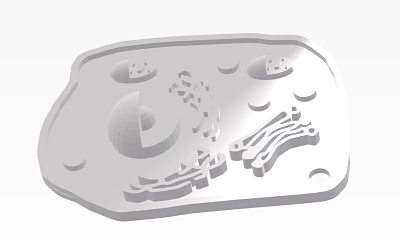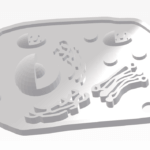
Technichal Specifications
How to use this exercise?
An animal cell is printed with the individual components in the size of a key ring. Expandable to include a plant cell and a bacterial cell.
Number of pieces of this exercise
1
General description
Basic shell of an animal cell. The components of a cell are placed on it:
mitochondria, chloroplasts, vacuole, smooth ER, rough ER, ribosomes, peroxisomes, cell nucleus, Golgi apparatus, lysosomes, flagellum, cilia, chromatin, plasmids, Golgi apparatus, lysosomes, flagellum, cilie, chromatin, plasmids.
Additional Material
Models used:
License Info
Attribution 4.0 International (CC BY 4.0) https://creativecommons.org/licenses/by/4.0/You are free to:
Share — copy and redistribute the material in any medium or format
Adapt — remix, transform, and build upon the material
for any purpose, even commercially.
Under the following terms:
Attribution — You must give appropriate credit, provide a link to the license, and indicate if changes were made. You may do so in any reasonable manner, but not in any way that suggests the licensor endorses you or your use.
No additional restrictions — You may not apply legal terms or technological measures that legally restrict others from doing anything the license permits.
Learning Specifications
How can the model be used in class?
In the cytology, immunobiology lesson:
Components of the cell should be assigned correctly on the basis of their appearance and their function should be described. The pupils should simply repeat contents in a playful way.
What benefits can its use have?
Haptic understanding of the cell structure.
Size ratios become clear.
Sustainable learning.
Can contain more or less organelles, depending on the type of school.
Can it be used in other subjects?
Health care
